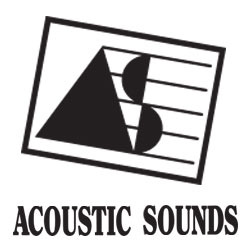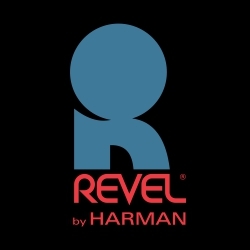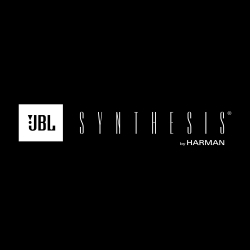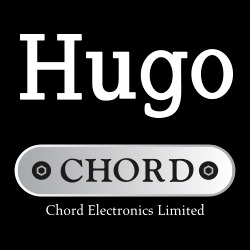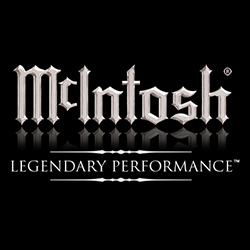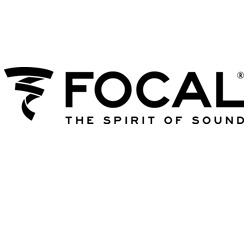Few specialist Japanese valve amplifiers ever leave Honshu; we try the long-awaited Air Tight.
Never, if you value your sanity, thumb through a Japanese hi-fi magazine. If you’re an inveterate hi-fi casualty, the pictures you’ll see will haunt you the way a girlie mag tortures Adrian Mole. I never take my own advice, so I pore over these exotic journals whenever they come my way (hi-fi and girlie). And for the past four years, I’ve been waiting impatiently for a stab at the electronics from Air Tight.
I admit that the charm of the name, the absolute perfection of that moniker for a brand of valve amplifiers, caught my attention as much as did the obviously exquisite manufacture. The price, too, appealed, considering that these amplifiers promised peerless construction and attention to detail you just don’t find this side west of a Jadis. At last, there’s a UK importer, so my wait is over.
If my assignment sheet is correct, this will be appearing in one of our High End specials, which means that I’m allowed to wax lyrical about stuff that’s impractical/over-priced/exotic/bizarre and un-Quad-like without fear of censure. Okay, gang, this is it: Air Tight has produced what has to be the audio equivalent of a Fabergé Egg.
The ATC-1 Valve Control Amplifier and ATM-1 Valve Power Amplifier contain all of the right ingredients for rampant audio delirium. The product descriptions read like a menu for a hi-fi bacchanal, especially if the diner has a craving for vintage, uh, vintages. Common to both units are PCB-free circuits, with everything hard-wired a la Golden Age hardware or our own Croft products. The valve bases are ceramic, with gold-plated sockets. The chassis are copper plated and the gorgeous, grey ‘almite treatment’ faceplates are machined from 8mm aluminium.
All of the valves are genuine brand-name items, like Siemens and Pentalab rather than whatever-you-can-get throwaways from China. They’re the closest things to jewellery that this industry has produced, in terms of finish, appearance and attention to detail. In other words, they’ve been assembled with the kind of fanaticism you find only in Tokyo or Teheran.
The preamp is deceptive because it’s so petite, measuring only 430x90x325mm (WHD). As with Counterpoint and other makers of slimline valve preamps, Air Tight mounts the five 12AX7s (ECC83s) horizontally. And as with Lux, who couldn’t resist mounting the valves on the front of their hybrid ‘Brid series integrateds, Air Tight mounts three of the little beauties so that they can be seen from the left-hand side of the case.
The gorgeous front panel provides source select for phono (m-m only), tape monitor, mono/stereo select, attenuate (full muting), balance, volume and on/off, plus an orange tell-tale. The controls are among the smoothest, most luxurious I’ve experienced, but I must resist the salacious adjectives which come to mind.
At the back, all is gold-plated, with inputs and outputs corresponding to the front controls, but with two extras. In addition to the main outputs there’s a spare set for feeding a second power amp and a pair of sockets tagged ‘EQ out’. The latter takes the phono signal from input through RIAA circuitry and straight out again, for feeding directly into the ATM-1 power amplifier, bypassing every unnecessary switch and stage in the preamp. This can be used in tandem with the standard outputs for
some curious purist combinations.
The circuit itself is based on vintage concepts, just like the PCB-free construction, and consists of a three-stage low-impedance equaliser described as ‘once employed by the Marantz 7’; this is the stage fed straight to the EQ Out sockets. The single stage line amp is devoid of tone controls or filter circuits and features low-impedance cathode follower output. The power supply employs a solid-state ripple filter circuit for suppressing mains hum and noises.
Despite the size of the enclosure, which would suggest the use of a compact toroidal transformer, Air Tight opted for an EI core type because it provides ‘sharper attack of sounds’. The cores are wrapped in silicon steel plate and copper plate to ensure perfect shielding. The power supply, phono and line stages are totally independent
and the latter two are fully shielded. The chassis was made deliberately heavy to help minimise vibration and component interaction. All tubes are pre-aged and fitted to the aforementioned gold-plated sockets in ceramic bases.
The ATM-1 power amplifier is based on Mullard research and employs four 6CA7 output valves from Siemens for a rated output of 36W/channel. For protection to the output tubes, Air Tight uses 5AR4 in parallel at the rectifying stage instead of a diode, to better cope with large current. (I don’t have my RCA or Babani guides handy, but I think they’re equivalents to the GZ34 in my cherished Dynaco…) The output transformers, deemed by many current amp builders as harder to find than good tubes, are the highly-rated Tamuras, as used in the Japanese broadcasting industry.
Air Tight operates the amplifiers for 100 hours before they’re ‘retuned’ and dispatched. Aside from a valve cracked in transit, these pieces have proven to be the most trouble-free and ghostly silent tube products I’ve used in recent memory. It also explains why Air Tight insisted on air-mailing to me a selected 12AU7 rather than risk any sonic compromises from my probably iffy stock of mystery brand tubes.
The amplifier features a bit more than the minimum socketry and on/off switch. Across the front are two sockets and three rotary controls in addition to an on/off button and tell-tale to match the preamp. The sockets accept a CD player straight in, while the first rotary chooses between the front panel inputs and the main inputs at the rear. The other rotaries are left and right volume controls for the source fed in via the front sockets. These sockets, by the way, bypass certain parts of the amplifier’s circuitry, connecting the input directly to the first stage valve.
At the back are the main inputs and the speaker terminals; the arrangement with the front panel ‘front/rear’ selector allows purists to feed the CD player into the front sockets, with the preamp and therefore the other sources left permanently installed at the back. Naturally, using the preamp in its EQ Out mode for optimum phono playback would require the use of the front sockets, hence the volume controls.
My only complaints about the presentation involve the diabolical speaker terminals, those daft constructs which only accept bare wire. Considering the prices of these units, I would imagine that importers could specify something a bit more practical for the models they’re importing, like Michell or Monster multi-way binding posts. Anyway, there are three terminals per channel rather than two, which allow for the selection of either four or eight ohm operation.
(A couple of other details of the review samples will probably be changed when regular stocks start arriving. These include three-core, blue/brown/green-yellow mains wiring, the blocking off of the extra two-pin mains outlet and the provision of a grille or cage to cover the valves and protect them from prying brats.)
I used the Air Tight combination with the Oracle Delphi II turntable, SME V tonearm and Audio-Technica ART-1 cartridge, the Marantz CD-12 CD player and the Sonus Faber Electa Amator and Celestion SL700 loudspeakers, with a variety of wires including Master Link, Mandrake, Lieder, Sony LC-OFC and Monster M1. And I
immediately hit on two mismatches.
Trying to think like the kind of anachrophile who would have designed these items, I’m assuming that the company anticipated use with high-output vintage cartridges like Deccas or m-cs like Ortofon SPUs with onboard transformers. Sure, I could get some sounds, but headroom and maximum level were in short supply, so I did my ‘quiet’ listening with the ART-1 fed straight in and my headbanging with the Glassic step-up in place.
The other mismatch was the Celestion SL700, which needs more juice than this baby can muster. Again, I could get some positively dandy sounds out of the ‘700s, but o way would it cope with the odd crescendo. But because sound – if not the levels – was so enticing, I spent as much time driving the ‘700s with the ATM-1 as I did the
easier Sonus Fabers. Thinking like the Japanese, though, would suggest that most of these will end up driving some hyper-sensitive classics like Lowther horn systems.
Mind you, I had so many combinations to try out, what with the bypass mode and the CD Direct inputs, that I stopped worrying about it and treated the reconnections like a daily chore. Like shaving.
Fortunately, the long build-up between the time I first learned of the Air Tight and the first listen was rewarded with some of the mostly gloriously lush and musical sounds I’ve heard since running an SPU into elderly Marantz and Dynaco tube electronics through the AR 2AXes. Talk about a blast from the past…
Actually, that’s unfair, because the preamp sounds ‘younger’ than the power amplifier, most of the Mills & Boon effects coming from the ATM-1. As I tried the preamp with the Aragons into the Divas and drove the amplifier both directly from CD and with the Audio Research SP-9, it was easy to attribute characteristics to the
pair’s respective halves.
What both share sonically are ghostly silences by both valve and solid-state standards, phenomenally wide and open sound stages and absolute freedom from edginess. But while the preamplifier is detailed and precise enough to be regarded as modern, the power amp has a softness – however enticing – that might be too romantic for those weaned on transistor equipment or current era valve powerhouses like the big EAR, Audio Research or Beard amplifiers.
But I’ll be damned if I’m going to apologise for the Air Tight because I loved the lushness. It reminded me again and again of a description John Atkinson gave me of the smaller Sonus Faber speaker. ‘Ken,’ he said, ‘it definitely has its flaws, but it’s just so damned musical.’
I couldn’t agree more. Playing both modern, glassy recordings and sonic masterpieces of the era of the Air Tight’s inspiration, I noted an unerring facility which these products have for sweetening whatever sounds they are fed. Is it accurate? Hell, no. But neither is it offensive in the way that identifiable distortions or wild colorations are. The Air Tight amplifier doesn’t really add anything which would annoy; it merely shaves off the edges which could become nasty.
This was identifiable whether I used the front sockets with a direct-injected line level source or via the preamp through the rear sockets. Despite my description of the ATM-1 as some kind of lavender scented granny of an amp, it remained transparent and coherent enough to reveal the benefits of the various bypass modes.
And then it hit me. Although I didn’t have the gear to hand, I’m absolutely certain that if these items were used with the kind of audiophile which is so cherished in Japan, the sweetness would offset the sharpness which I attribute to Decca cartridges and horn-type loudspeakers. In which case, the synergy of these modern antiques with genuine antiques would provide some kind of anachrophilic bliss.
As the ATM-1 can be modified for monophonic 80W, 2 ohm operation, the power shortage is not a problem. (Indeed, the company already manufactures a beast called the ATM-2 which uses four KT88s for 80W/channel from one chassis.) But £2059 is a fair chunk of cash for what is the audio equivalent of a rebuilt-from-the-ground-up Jag Mk II. The preamp, at £1769, has to compete with the better-equipped, far more precise Audio Research SP-9 among others. But that’s missing the point.
With that attitude, there’d be no more Leica rangefinder cameras, only Canon EOS auto-everythings. There’d be no more mechanical Rolexes, only throwaway Swatches. No, ownership of the Air Tights requires a bit more than money. It requires a weird and wonderful blend of nostalgia, an appreciation for hand-crafted mavericks, a sense of aesthetics which deems a Bristol more righteous than a Porsche, tastebuds which prefer Nova Scotia salmon to that stuff from Scotland.
The Air Tights are to me simply the nicest products around for powering classy little boxes like the Sonus Fabers, for satisfying a craving for the past without the risk of running elderly components. The ATC-1 and ATM-1 aren’t really hi-fi products after all. They’re the stuff which are made of dreams.
(Hi-Fi News & Record Review, August 1989)

